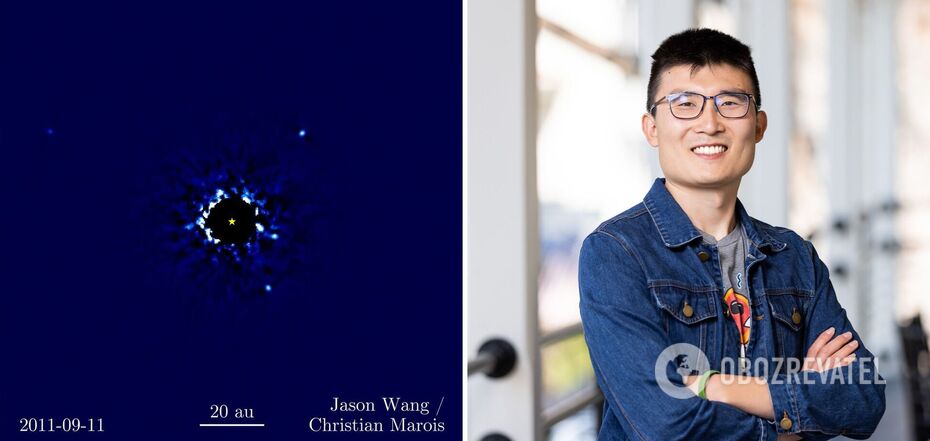Life
Astronomer has been filming the movement of exoplanets for 12 years: amazing video
The discovery of the first exoplanet in 1995 revolutionised astrophysics. Scientists were finally able to make their instruments perfect enough to see objects that do not glow on their own, making them very difficult not only to observe but even to record. The pioneers, Swiss scientists Michel Major and Didier Kelo, later received the Nobel Prize for this, and their followers have already discovered more than 5,000 exoplanets - planets outside our solar system. American astrophysicist Jason Wang went even further and showed how such bodies move around their star.
According to Northwestern Now, Wang and his colleagues observed the system of the star HR 8799 in the constellation Pegasus. The star, which is 30 million years old, was discovered in 2008. It is located 133 light years away and has 4 exoplanets orbiting it. Wang's team has been periodically observing this system at the Keck Observatory for seven years (to watch the video, scroll to the end of the news story).
One of the results of their work was the first time-lapse video of the exoplanets' motion around their star. It was later supplemented with other data over the 12-year period of observations of the system. In the end, Wang edited a 4.5-second video showing the movement of four planets around the star HR 8799 over all these 12 years.
"It is difficult to observe planets from orbit. We won't see the movement of Mars or Jupiter because we are in the same system as them. Astronomical events happen either too fast or too slow compared to our lifetime. This video shows the movement of the planets on a scale that is more familiar to us," Wang explained the importance of his work.
Wang used adaptive optics technology to make the video understandable even to a viewer far from physics. It corrects image distortions caused by turbulence in the Earth's atmosphere. The scientist also needed coronagraphs to dim the blinding light from the parent star. And special processing made it possible to fill in data gaps, as the scientists did not observe the system continuously. As a result, the video turned out to be smooth - the planets move without jumps.
In the final video, you can see four faint specks floating in space around their central star. In fact, all of these dots are massive gas giants. Wang compares them to "enlarged versions" of Jupiter, Saturn, Neptune, and Uranus. The planet closest to the star takes about 45 Earth years to complete one revolution. The most distant planet takes almost 500 Earth years to orbit. Wang and his colleagues, who performed this amazing work, are now studying the light from HR 8799 and its planets to learn their composition.
Earlier, OBOZREVATEL published a photo of a "green comet" that flew past the Earth at the closest possible distance.
Subscribe to OBOZREVATEL's Telegram and Viber channels to keep up with the latest news.



























